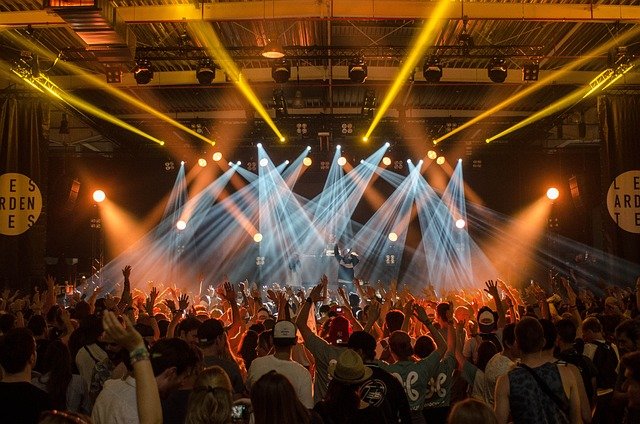Rights, Licensing, and Revenue for Digital Releases
This article outlines how rights, licensing, and multiple revenue streams interact for digital releases in arts and entertainment. It covers streaming, distribution, royalties, subscriptions, analytics, and practical pricing examples to help creators and managers understand income sources and obligations.

Digital releases blend creative control with legal and commercial frameworks. Rights and licensing determine who can reproduce, distribute, or adapt work, while revenue depends on how content is delivered: streaming, direct sales, subscriptions, or bundled offerings. Understanding the interaction between contracts, collection systems, and promotion strategies helps artists, managers, and small labels assess income, protect ownership, and plan distribution, touring, and merchandising efforts for sustainable engagement and fan growth.
How does streaming affect rights and revenue?
Streaming platforms have become a primary channel for distribution, but they operate under specific licensing models. Mechanical and performance rights govern how recordings and compositions are used, and streaming payouts are typically split across rights holders, platforms, and collecting societies. Streaming income can scale with plays but often requires high volume to match traditional sales. For creators, combining streaming with direct sales, merchandise, and ticketing can diversify revenue. Distribution agreements and exclusivity clauses also affect where and when content appears, influencing promotion, engagement metrics, and subsequent licensing opportunities.
What licensing models apply to digital releases?
Licensing for digital releases covers sync licenses for visual media, mechanical licenses for reproductions, and performance licenses for public streaming or broadcasts. Aggregators and distributors often secure basic digital distribution rights, but creators should check for retained rights, territory limits, and duration. Licensing for remixes, samples, or derivatives requires clearances that can affect royalties and potential sponsorship or brand deals. For immersive releases or interactive experiences, additional rights around interactivity and user-generated content should be negotiated to avoid later disputes and to enable merchandising and touring tie-ins.
How are royalties tracked and paid?
Royalties arise from multiple streams: streaming, downloads, radio, sync placements, and physical sales. Performance rights organizations (PROs) and mechanical rights agencies collect and allocate payments, but accurate metadata and registration are essential to receive correct splits. Royalties reporting varies by platform; analytics and distribution dashboards help reconcile plays with payments. For many creators, crowdfunding and direct-to-fan sales provide clearer margins than pooled streaming revenue, while sponsorships and merchandising add separate income that is not always managed through traditional royalty channels.
How do subscriptions and ticketing tie into income?
Subscriptions — whether for a streaming service, a fan club, or a creator platform — can provide predictable revenue through recurring fees, enhancing long-term engagement. Premium subscription tiers often include exclusive releases, early access to immersive content, and bundled merchandise. Ticketing revenue from live or virtual events remains significant; ticket platforms and promoters take fees, and touring income requires careful rights management for recordings and live streams. Integrating ticketing with digital releases, timed exclusives, or bundled subscriptions can raise average revenue per fan while affecting pricing strategy and promotion planning.
How do analytics relate to engagement and promotion?
Analytics reveal who listens, where engagement is highest, and which tracks drive merchandise or ticket sales. Platforms provide demographic, geographic, and consumption metrics that inform touring plans, targeted promotion, and sponsorship proposals. Data helps identify high-engagement markets for immersive experiences or limited-edition merchandising drops. Accurate analytics also strengthen negotiation positions for licensing and sponsorships, showing measurable audience value while guiding decisions about distribution windows, playlist pitching, and crowdfunding goals.
What are typical pricing and distribution options?
Pricing and distribution choices affect royalties and visibility. Artists can use direct-to-fan platforms, digital distributors, or label deals. Distributors vary in fee structure: some charge annual subscriptions, some per-release fees, and others apply commissions on sales. Below is a comparison of commonly used services and their approximate cost structures. These entries are representative examples to illustrate how pricing models differ between subscription-based distributors, per-release services, direct-sale platforms, and ticketing solutions.
| Product/Service | Provider | Cost Estimation |
|---|---|---|
| Digital distribution (subscription model) | DistroKid | Approx. $19.99/year for an individual plan |
| Digital distribution (per-release) | TuneCore | Approx. $9.99 per single (first year); albums from ~$29.99 first year |
| Digital distribution (one-time fee + commission) | CD Baby | Approx. $9.95 per single; albums from ~$29 plus commission on sales |
| Direct-to-fan sales | Bandcamp | Approx. 10–15% commission on digital sales (platform fee) |
| Ticketing platform | Eventbrite | Varies by event; fees often include a percentage + fixed per-ticket charge |
Prices, rates, or cost estimates mentioned in this article are based on the latest available information but may change over time. Independent research is advised before making financial decisions.
Conclusion Rights, licensing, and revenue for digital releases form an interconnected system where legal clarity, platform choice, and diversified income streams matter. Effective use of licensing, consistent metadata registration, analytic-driven promotion, and balanced pricing help sustain revenue across streaming, subscriptions, ticketing, crowdfunding, merchandising, and sponsorships. Careful planning of distribution and contractual terms preserves rights while enabling creators to capitalize on engagement and touring opportunities without compromising long-term ownership.





